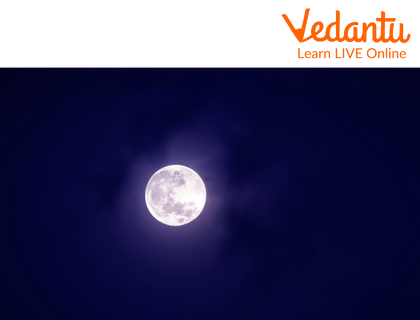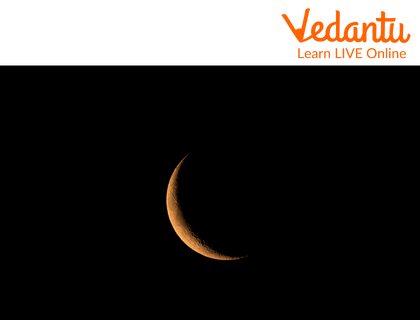




Scientific Fact behind the Shining of Moon at Night
Who does not love to see the Moon increasing and reducing in size at night? It is the brightest of all the celestial bodies shining at night. Do you know that Moon does not have its own light like the stars? How does it shine then? Let us find out the scientific reason behind the shining of the Moon.
What is the Moon?
The Moon is the natural satellite of the earth. It revolves around the earth and completes a round in 28 days. These 28 days is called lunar month. Do you know that other planets in our Solar System have moons? Moon is the 5th largest in size.
How Does the Moon Shine at Night?
Unlike the stars and our Sun, the Moon does not have its own light. It is a solid round object, similar to a planet, which does not produce or emit light of its own.
The night Moon, as mentioned earlier, does not produce its light. Then, how does it shine every night? Why does the shining part of the moon increase and reduce in size? Sometimes, we see a full moon and sometimes, it vanishes from the sky. Why does it happen? Let us find out the answers to all these questions.

The Full Moon
Moon is not a good reflector of sunlight. The sunlight falls on the Moon’s surface in the same way it falls on the earth. The Moon's surface then reflects back the sunlight and looks illuminated to our eyes.
We all know that our earth is in 3rd place in the Solar System after Mercury and Venus. It means we are quite close to the Sun and so is Moon. The amount of light falling on the surface of the Moon is enough to make it illuminated.
During the daytime, we cannot see the Moon as it hides in the pure sunlight falling on us. At night, we don’t receive sunlight and the night sky appears dark. In this dark background, the Moon reflecting sunlight becomes more prominent. This is why the Moon shines by reflecting the sunlight at night.
Did You Know?
The size of the Moon remains the same but the reflecting surface area reduces and increases across a month. It happens due to the full, partial, or no exposure of the Moon’s surface to the sun rays that we can see.
We see a full circle or a full Moon glowing at night when the visible surface is circular in size. We see a crescent moon or a half moon when the illuminated surface is partially seen from the earth. We see a new moon or no moon at all when the illuminated surface is away from us. The dark surface of the moon is not visible to us at night.
You will also be surprised to know that the Moon absorbs the maximum of the sun rays falling on its surface. It only reflects back 12% of the sun rays incident on it. Despite this fact, the Moon seems to glow more than the stars. It happens due to the shorter distance between the Moon and the earth than the stars.

The Crescent Moon
Tips for Parents
Explain how the Moon gets light to the kids by using drawings and images. It is ideal to explain this topic using pictorial illustration. Kids will love to understand this scientific fact of the Moon shining at night using sun rays. They will also learn the concepts of the new moon and the full moon.
FAQs on How Does the Moon Shine?
1. Why can’t we see the whole moon shine all the time?
The Moon revolves around the earth. We also know why do the Moon shine. Due to the position of the earth between the Moon and the Sun, we see partial, full, or no moon every month.
2. Why the Moon is bigger than the stars?
The Moon is located very close to the earth when compared to the stars. This is why it looks bigger.
3. Does our earth block sunrays from falling on the Moon?
When the earth comes in between the Sun and the Moon, it blocks the sunrays fully or partially.









